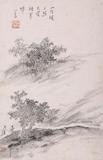清郎世寧畫瑞麅 軸
推薦分享
資源連結
連結到原始資料 (您即將開啟新視窗離開本站)後設資料
- 資料識別:
- 故畫003730N000000000
- 資料類型:
- 類型:繪畫
- 型式:靜態圖像
- 著作者:
- 郎世寧
- 主題與關鍵字:
- 奇石 鹿 竹 柏 溪澗、湍泉 靈芝
- 出版者:
- 數位化執行單位:國立故宮博物院
- 格式:
- 本幅 216.2x144.6公分、全幅 公分
- 關聯:
- 石渠寶笈三編(延春閣),第五冊,頁2471 &*故宮書畫錄(卷八),第四冊,頁130 &*故宮書畫圖錄,第十四冊,頁83-84&*郎世寧(西元一六八八-一七六六年),意大利人。十九歲時,入天主教耶穌會為修士。曾習油畫,兼習建築。二十七歲來華傳教,以繪事供奉內廷。歷仕康熙、雍正、乾隆三朝。畫法參酌中西,善畫人物、花鳥,尤擅犬馬。 圖中地面湧泉、靈芝皆表示吉祥之意,柏樹下似鹿無角的白獸,稱「瑞麅」,為蒙古台吉必力達賴所進,時逢皇太后六旬萬壽,用以慶賀祥瑞。畫成於乾隆十六年(一七五一),時郎氏六十三歲。 &* Lang Shih-ning is the Chinese name used by the Italian, Giuseppe Castiglione. At the age of 19, Castiglione entered the Jesuit order in Italy as a novitiate, and his early training included painting and architecture. He was subsequently sent to China and arrived in 1715. His artistic skills came to the attention of the emperor, and he served in the inner court during the K’ang-hsi (1662-1722), Yung-cheng (1723-1735), and Ch’ien-lung (1736-1795) reigns as a painter. He combined his previous training with studies of Chinese painting techniques to create a style fusing the best of both traditions. He excelled at depicting figures, birds-and-flowers, and especially dogs and horses. The details of the rushing stream and spirit fungi found in this painting enhance the auspicious character of the roe deer. This type of deer, standing below a cedar, appears to be a variety of hornless roe known as “auspicious roe.” It was presented by the Mongolian Dalai Lama, T’ai-chi-pi-kun, as tribute to the empress in celebration of her sixtieth birthday. The gift implies a wish for long life and good fortune. This painting was done in 1751, when Castiglione was 63. &*郎世寧在清宮的畫作經常與物品的「記錄」有關。畫中白色鹿的正式名稱為「麅」是歐亞特有的一種小型鹿,體型比梅花鹿小,前肢短後肢長,耳朵、眼睛略大,性情溫馴。此畫是乾隆十六年(1751)秋天圍獵時,由蒙古部族所進獻的麅。據聞長壽之鹿,毛色才能如此純白;當年恰為皇太后六十大壽,是以作詩祝誦並圖繪記錄。毛色以極細膩的筆法畫出,並有光影色澤的處理,頭略傾側,更添溫馴神情。&*Giuseppe Castiglione’s role in painting at the Ch’ing court often was related to that of “making records.” The white deer shown in this painting is formally known as a roe, a kind of small deer found in Eurasia. Smaller than a spotted deer, its forelegs are shorter than its hind legs. With slightly large ears and eyes, it is known for its docile nature. This painting was done during the autumn imperial siege hunt of 1751 to record a roe deer that had been submitted as tribute by the Mongols. According to Chinese mythology, the deer of longevity is said to have fur that is pure white. The year that this work was done just happened also to be the sixtieth birthday of the Empress Dowager, which was recorded with poetry of blessings and painting as record. The fur here is done with exceptionally fine brushwork, and the luster and hues are faithfully rendered. Its head turned slightly to one side adds an expression of tenderness.&*1.王耀庭、陳韻如,〈清郎世寧畫瑞麅〉,收入王耀庭主編,《新視界 : 郎世寧與清宮西洋風》(臺北:國立故宮博物院,2007年初版),頁70-71。
- 管理權:
- 國立故宮博物院
授權聯絡窗口
- 國立故宮博物院圖像授權、出版授權、影音資料授權-申請流程說明
http://www.npm.gov.tw/zh-TW/Article.aspx?sNo=03003061






